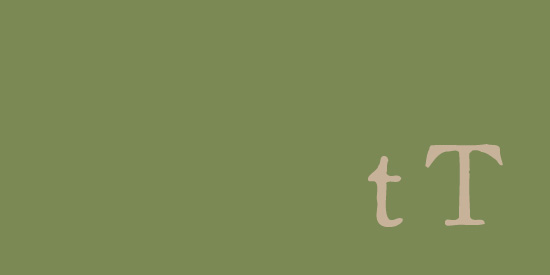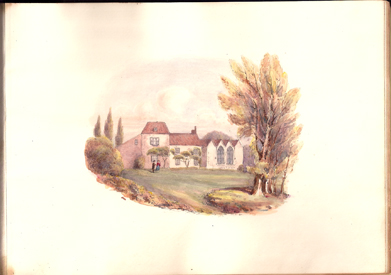TACTILE | MERCANTILE, Tennyson, &c.
tT
WHAT: T
WHEN: Pre-1900
WHO: The Un-Gyve Limited Group
WHERE: Boston
TACTILE | MERCANTILE: in two installations (Scene One and Scene Two), curated by Un-Gyve, a retrospective of works in colour by Judith Aronson at The Isole Gallery of Art + Industrial Design the catalogue in two books from Un-Gyve Press.
TAMURA NANAE: Poet TAMURA Nanae has been writing haiku for more than two decades, learning from Tsuda Kiyoko, a disciple of Yamaguchi Seishi and Hashimoto Takako. For the past twelve years she has been a columnist for the haiku magazine Shiki Shimppo (The Shiki Newsletter) and she was part of the team of translators that created “If Someone Asks…Masaoka Shiki’s Life and Haiku. Born in Kyoto, she now lives in Matsuyama, Ehime. She is co-editor with Cor van den Heuvel of Baseball Haiku The Best Haiku Ever Written about the Game (Norton, 2007). HAIKU by Harry Thomas is published by Un-Gyve Press (2020) in a limited, signed edition with a number of the poems translated into Japanese by TAMURA Nanae.
TELEGRAPH: On May 24, 1844, Samuel F. B. Morse famously transmitted WHAT HATH GOD WROUGHT from the Supreme Court chamber in the basement of the U.S. Capitol building in Washington, D.C., to the B&O's Mount Clare Station in Baltimore. Annie Ellsworth selected these words from the Bible (Numbers 23:23); her father, U.S. Patent Commissioner Henry Leavitt Ellsworth, supported and secured funding for Morse's invention. The Morse telegraph transmitted thirty characters per minute.
TEMPEST: codename: Tempest cryptographic intelligence program declassified (Approved for Release by NSA on 09-27-2007, FOIA Case #51633) implemented to address the problem of compromised intelligence-bearing signals. "This problem of compromising radiation we have given the covername TEMPEST.":
During World War II,
the backbone systems for Army and Navy secure
teletypewriter communications were one-time tapes and
the primitive crypto-equipment SIGTOT. For encrypting,
the Services used a Bell-telephone mixing device, called
a 131-B2. When one of these mixers was being tested in
a Bell laboratory, a researcher noticed, quite by accident,
that each time the machine stepped, a spike appeared on an
oscilloscope in a distant part of the lab. After he examined
these spikes more carefully, he found that he could read the
plain text of the message being enciphered by the machine!
Bell Telephone faced a dilemma. They had sold the
equipment to the military with the assurance that it was
secure, but it wasn't. The only thing they could do was to
tell the Signal Corps about it, which they did. There they
met the charter members of a club of skeptics who could
not believe that these tiny pips could really be exploited
under practical field conditions. They are alleged to have
said something like: "Don't you realize there's a war on?
We can't bring our cryptographic operations to a
screeching halt based on a dubious and esoteric laboratory
phenomenon. If this is really dangerous, prove it." So, the
Bell engineers were placed in a building on Varick Street in
New York. Across the street and about 80 feet away was
Signal Corps' Varick Street cryptocenter. The engineers
recorded signals for about an hour. Three or four hours
later, they produced about 75% of the plain text that was
being processed — a fast performance, by the way, that has
rarely been equalled.
Excerpted from TEMPEST: A Signal Problem
The story of the discovery
of various compromising radiations
from communications and Comsec equipment.
(Approved for Release by NSA on 09-27-2007, FOIA Case #51633)
TENNYSON: Alfred Tennyson, Birthplace at Somersby. Views of the Haunts and Homes of the British Poets, Oct. 19 1850.
THOMAS: Harry Thomas is the translator of Joseph Brodsky’s masterpiece, “Gorbunov and Gorchakov” (To Urania, Penguin, 1987). He is the editor of Selected Poems of Thomas Hardy (Penguin, 1993), Montale in English (Penguin, 2002) and Poems about Trees (Knopf, 2019). His poems, translations, essays, and reviews have appeared in dozens of magazines. He is former Editor-in-Chief of Handsel Books, an imprint of Other Press as well as an affiliate of W. W. Norton. Some Complicity: Poems & Translations by Harry Thomas from Un-Gyve Press (2013). The Truth of Two Selected Translations by Harry Thomas from Un-Gyve Press (2017). HAIKU by Harry Thomas from Un-Gyve Press (2020).
THOMSON: James Thomson, Cottage in Kew-Lane. Views of the Haunts and Homes of the British Poets, Oct. 19 1850.
TOUCHETTE: Amy Touchette is a fine art photographer based in Brooklyn, New York. Her photographs have been exhibited nationally and internationally, including the Moscow MoMA, the Pingyao International Photography Festival (China), Arte Fiera OFF (Italy), Noorderlicht Gallery (Netherlands), and the New York Photofestival (USA). Her work has appeared recently in the New York Times, Esquire magazine in Russia, and Peter Hay Halpert Fine Art’s upcoming book Identities Now: Contemporary Portrait Photography. Trained at the International Center of Photography, Touchette is currently at work on a series about nightlife, art, and Brooklyn, among others. Her first book Shoot the Arrow: A Portrait of The World Famous *BOB* is published by Un-Gyve Press.
THE TRUTH OF TWO: The Truth of Two: Selected Translations by Harry Thomas from Un-Gyve Press published in 2017. Harry Thomas’s translations of Catullus, Li Bai, Sor Juana Inés de la Cruz, Giacomo Leopardi, Salvador Díaz Mirón, Paul Valéry, Antonio Machado, Umberto Saba, Giuseppe Ungaretti, Pedro Salinas, Eugenio Montale, Jorge Luis Borges, Pablo Neruda, Primo Levi, Yves Bonnefoy, Joseph Brodsky.
TWOSOMES: Mark Chester’s Twosomes touring exhibit and companion book from Un-Gyve Press represents images culled from his forty years of traveling with a camera, presented in pairings related by subject matter, graphic interest or, as the photographer puts it, “a stretch of the imagination.” — a wide-reaching body-of-work that connects architectural icons with sidewalk signage; Japan with Iowa; 1979 with 2002; celebrity with passerby in a manner that reveals, as novelist Paul Theroux describes, “tremendous humanity and humor....In this juxtaposition of matching moods and paraphernalia, Mark Chester shows us in an ingenious way how the world is related and how we matter to each other.”
N.B. The alphabet swatch colour is Tennis Lawn from the Un-Gyve Palette.


